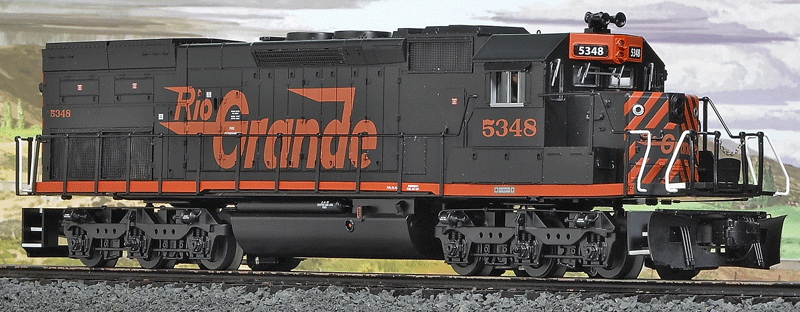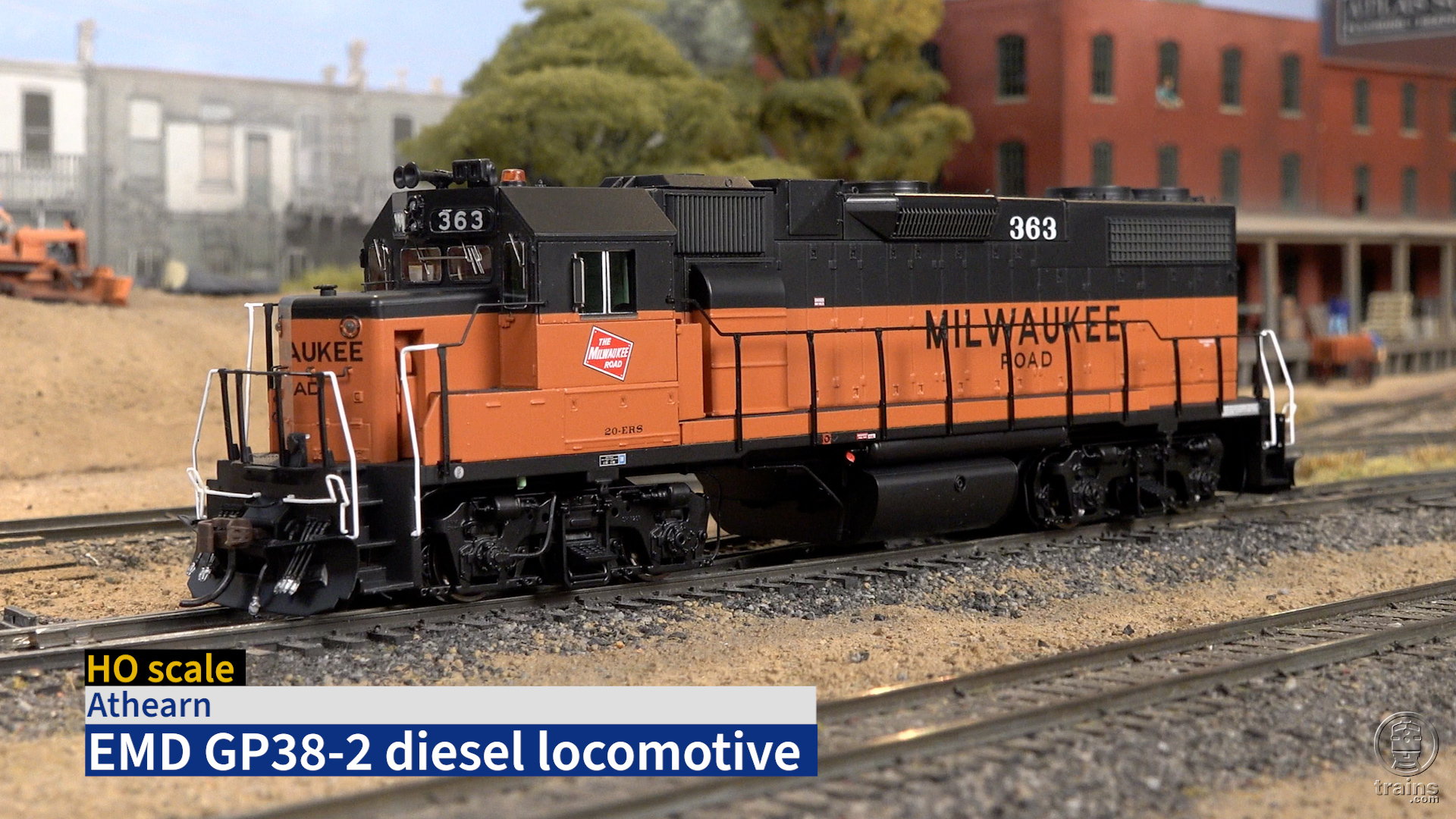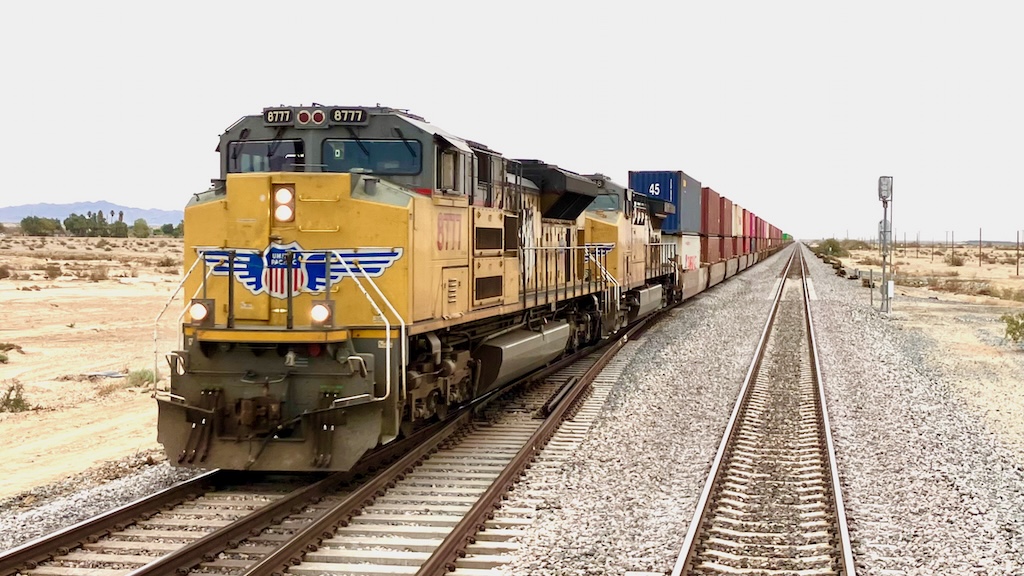Air problems in mountain tunnels and long snowsheds are not new. The lack of fresh, cool air plagued locomotive crews in the days of steam. In the diesel era, the problem didn’t become a show-stopping situation until locomotives began to exceed the 3,000-horsepower level.
While crew members were generally safe and sound at the front of the train, the internal combustion engines that powered the locomotives didn’t fare too well. Hot exhaust gases could be trapped along the roof of the tunnel. The hot fumes would be pulled back inside the locomotive air intakes, causing a chain reaction of problems resulting in the shutdown of the prime movers.
The Electro-Motive Division of General Motors conducted experiments to resolve the problem. On an SD45 diesel, dubbed the SD45X, EMD used an additional exhaust fan and changed the radiator air intakes, resulting in a slightly lengthened locomotive body with air screens placed low on the body. This evolved into the SD45T-2, and eventually, a variation of the 3,000-horsepower SD40-2. The Denver, Rio Grande & Western ultimately bought 72 of the SD40T-2s for mountain running.
The model
The focus of our attention is Lionel’s SD40T-2. For $265 this O gauge model contains just the basics: two can-style motors, a smoke unit, and an electronic horn. It doesn’t come with Lionel’s TrainMaster, RailSounds, and Odyssey systems – as well as the larger price tag.
This locomotive also is among the first to feature Lionel’s all-new drive mechanism (more on that in a moment).
Visually, the SD40T-2 is a winner. The pilot features a snowplow with brake- and multiple-unit cables fed through access slots cut into the plow. The corner steps have see-through safety grating, and the deck all along the locomotive features a safety-grid pattern.
The snout on this beast is a short hood. Some versions run by the Southern Pacific and Union Pacific had longer noses for remote-control equipment. The nose features markers and headlights, add-on grab irons, a brake wheel, and a sand-access tube. Photos of actual SD40T-2s show a manual pump arm and not a brake wheel on the side of the nose.
The cab has a plain roof. Up top are a dual headlight, number boards, and an add-on horn. There also are sunshades over each window.
The cab windows open and close, and two crew figures are positioned inside. The cab doors are hinged and appear to open, but I couldn’t find anything with a fine enough edge to open them without possibly scratching the plastic.
There is plenty of hatch, seam, hinge, and handle detail. I was pleasantly surprised to discover that the intake screens behind the cab, and not just the radiator exhaust screens, are see-through plastic.
The roof features a smoke-unit exhaust, eight lift-rings, and see-through screens over the exhaust fans. The finely screened radiator shutters over the rear segment don’t look see-through, but they are. The only problem is that the black screens are over a solid section of black plastic.
The rear of the SD40T-2 is flat, and it has markers and headlights as well as add-on grab irons and a sand pipe. The skimpy size of the rear deck mirrors the prototype – it pretty much doesn’t exist. You’d need to be a very skinny crewmember to squeeze through.
The rear pilot also has brake and multiple-unit cables, but on our sample locomotive one set either fell off when we weren’t looking or wasn’t affixed at the factory.
The model’s frame measures 65 feet in O scale (16¼ feet long ). The prototype’s frame is 66 feet 6 inches.
The model’s painting and decoration are good.
You’ll be pleased to discover, as we were, that this locomotive’s budget price does not equate to average performance. The speed range for this model was great. We measured the locomotive’s low-end speed average as 7.8 scale mph and its high-end speed average as 93.5 scale mph. And remember, that 7.8 scale mph is without Odyssey speed control.
In operation the SD40T-2 ran smoothly. Its motor system was very responsive to changes in the throttle, using both an MTH Z-4000 transformer and a Lionel TrainMaster command system operating in conventional mode.
Each die-cast metal truck has a pair of power pickup rollers spaced about 3 inches apart. The two inboard rollers are 5½ inches from each other.
The locomotive is powered by two can-style motors that apply power to one axle per truck. For an in-depth look at Lionel’s new single-axle motor system, see page 62.
While some operators may balk at the idea of trucks with just one powered axle, the proof is in the pudding, or, in this case, drawbar pull.
We measured the drawbar pull of our sample 5-pound locomotive at 1 pound 13 ounces, which is in the middle of the pack. How did it stack up to other Lionel six-axle locomotives we’ve reviewed in the past few years? Here are some numbers:
But before you jump up and shout, “I told you it wouldn’t pull as much,” please note that while the pulling power of this SD40T-2 isn’t as robust as some recent six-axle Lionel engines, it does match the model that it’s most similar to – the SD40-2, with its six-axle drive.
As detailed in the story on page 62, the new drive mechanism should not be cause for concern. We’ll add this diesel to our long-term test fleet and report back to you on its performance.
The fan-driven smoke unit on the new Lionel model cranked out a satisfactory torrent of the white stuff. You’ll find the on/off switch on the engineer’s side of the frame.
The electronic horn sounds OK, but it’s nothing to write home about.
All in all, I give the SD40T-2 two thumbs up. Personally, I usually run conventional-control locomotives (though I’ve kind of grown attached to the various speed controls). This model combines a very nice level of detail with a smooth-running motor system, and a price well below $300. All this equals a winner in my book.
Price: $264.99 (no. 28247), $159.99 (non-powered no. 28248)
Features: O-31 operation, two can-style motors, smoke unit, electronic horn, all-new drive mechanism
Pros: Great see-through exterior details, smooth-running motor
Cons: So-so horn
Made in the People’s Republic of China for Lionel















Nice would be better if you put tmcc in
using a digital horn/bell like the one williams uses would have been better
Nice product but the horn needs work….